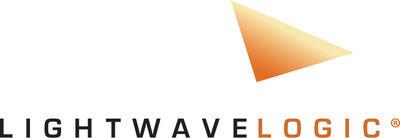Lightwave Logic Enhanced Photostability Results Demonstrate Reliability Necessary for Commercial Deployments
Lightwave Logic (NASDAQ: LWLG) reported significant advancements in photostability for its proprietary electro-optic polymer modulators, essential for commercial deployment reliability. Testing showed no performance degradation after 3000 hours of intense optical exposure, confirming compatibility with high-volume manufacturing and operational reliability for optical transceivers. CEO Michael Lebby highlighted the importance of these results in addressing customer concerns about manufacturing processes and the durability required for internet infrastructure, positioning the technology as a crucial upgrade for internet speed and power efficiency.
- Demonstrated photostability after 3000 hours of high-intensity optical exposure.
- Results support compatibility with standard semiconductor manufacturing processes.
- Enhances reliability needed for commercial deployments in internet infrastructure.
- None.
ENGLEWOOD, Colo. , May 25, 2022 /PRNewswire/ -- Lightwave Logic, Inc. (NASDAQ: LWLG), a technology platform company leveraging its proprietary electro-optic polymers to transmit data at higher speeds with less power, today announced enhanced photostability results on the company's proprietary electro-optic polymer modulators – demonstrating the reliability necessary for commercial deployments – all based on a technology which can be ported into high-volume silicon foundries and integrated onto a silicon photonics platform with other optical devices.
Photostability is a critical performance metric required both in high volume manufacturing processes (such as photolithography) and in offering the high reliability and network availability required for commercial deployments. In the tests conducted, subjecting the company's latest polymers to high intensity optical power for over 3000 hours produced no change in device performance. The ability of Lightwave Logic's proprietary polymers to pass this accelerated photostability aging test provides assurance that they will both tolerate the optical exposures which occur in high-volume manufacturing and support the reliability over the required operating life of optical transceivers and network elements.
Dr. Michael Lebby, Chief Executive Officer of Lightwave Logic, commented: "These photostability results demonstrate both the compatibility with standard semiconductor manufacturing processes needed for security of supply and the high reliability needed for commercial deployments. Our technology is well positioned to become a key enabler for upgrading the speed of the internet, as well as decreasing power consumption, both of which are now the Achilles Heel for internet network architectures.
"When we talk to potential customers excited about the performance offered by our polymers, the two questions they always ask are, firstly, whether our polymers can be manufactured using standard processes, and secondly, do our polymers have the reliability required to support high network availability and the specified operating life for commercial deployments. With these results – building upon the foundation of our previous stability results – we can answer affirmatively for both - which is very exciting as we seek to make our polymers ubiquitous in the internet infrastructure landscape."
About Lightwave Logic, Inc.
Lightwave Logic, Inc. (NASDAQ: LWLG) is developing a platform leveraging its proprietary engineered electro-optic (EO) polymers to transmit data at higher speeds with less power. The company's high-activity and high-stability organic polymers allow Lightwave Logic to create next-generation photonic EO devices, which convert data from electrical signals into optical signals, for applications in data communications and telecommunications markets. For more information, please visit the company's website at lightwavelogic.com.
Safe Harbor Statement
The information posted in this release may contain forward-looking statements within the meaning of the Private Securities Litigation Reform Act of 1995. You can identify these statements by use of the words "may," "will," "should," "plans," "explores," "expects," "anticipates," "continue," "estimate," "project," "intend," and similar expressions. Forward-looking statements involve risks and uncertainties that could cause actual results to differ materially from those projected or anticipated. These risks and uncertainties include, but are not limited to, lack of available funding; general economic and business conditions; competition from third parties; intellectual property rights of third parties; regulatory constraints; changes in technology and methods of marketing; delays in completing various engineering and manufacturing programs; changes in customer order patterns; changes in product mix; success in technological advances and delivering technological innovations; shortages in components; production delays due to performance quality issues with outsourced components; those events and factors described by us in Item 1.A "Risk Factors" in our most recent Form 10-K and Form 10-Q; other risks to which our company is subject; other factors beyond the company's control.
Investor Relations Contact:
Lucas A. Zimmerman
MZ Group - MZ North America
949-259-4987
LWLG@mzgroup.us
www.mzgroup.us
![]() View original content to download multimedia:https://www.prnewswire.com/news-releases/lightwave-logic-enhanced-photostability-results-demonstrate-reliability-necessary-for-commercial-deployments-301554078.html
View original content to download multimedia:https://www.prnewswire.com/news-releases/lightwave-logic-enhanced-photostability-results-demonstrate-reliability-necessary-for-commercial-deployments-301554078.html
SOURCE Lightwave Logic, Inc.
FAQ
What recent results did Lightwave Logic announce regarding photostability?
How does Lightwave Logic's technology impact internet speed and energy consumption?
What are the implications of Lightwave Logic's photostability results for manufacturing?
How long did the tests for photostability last?







